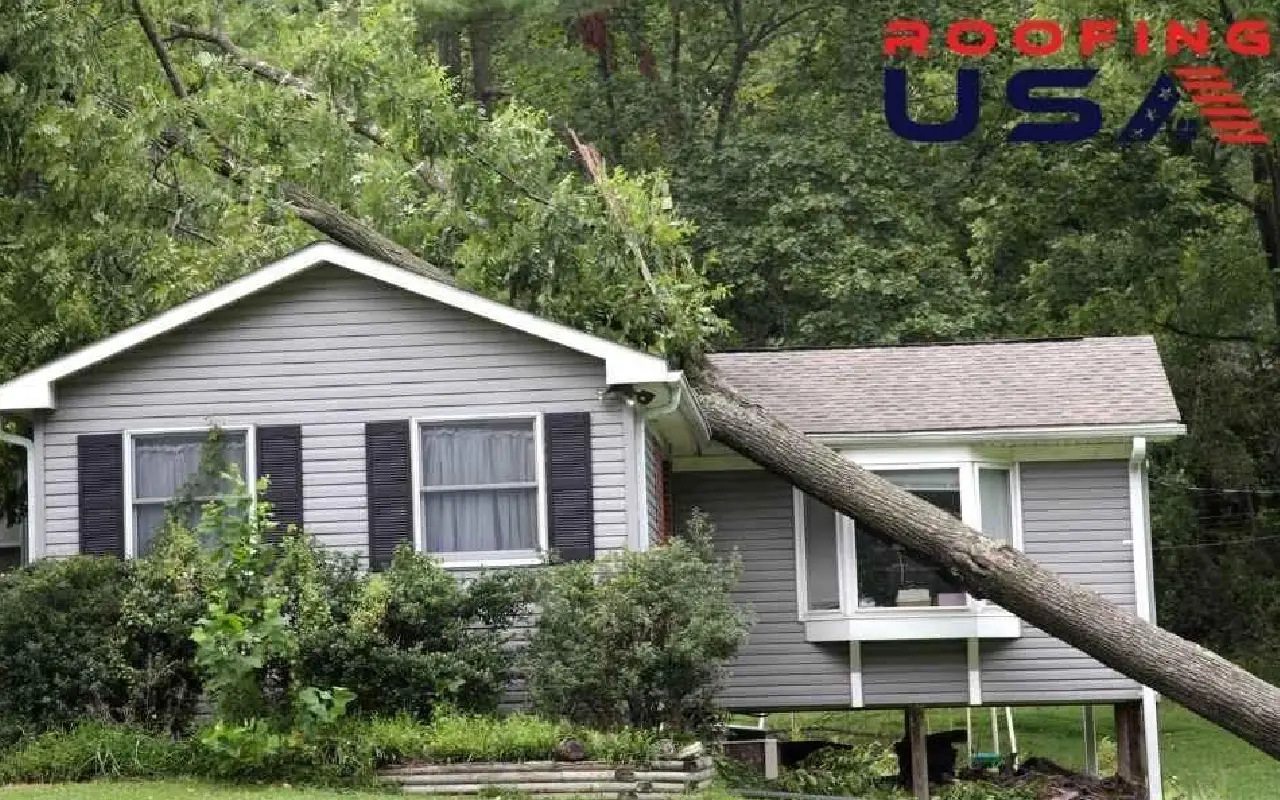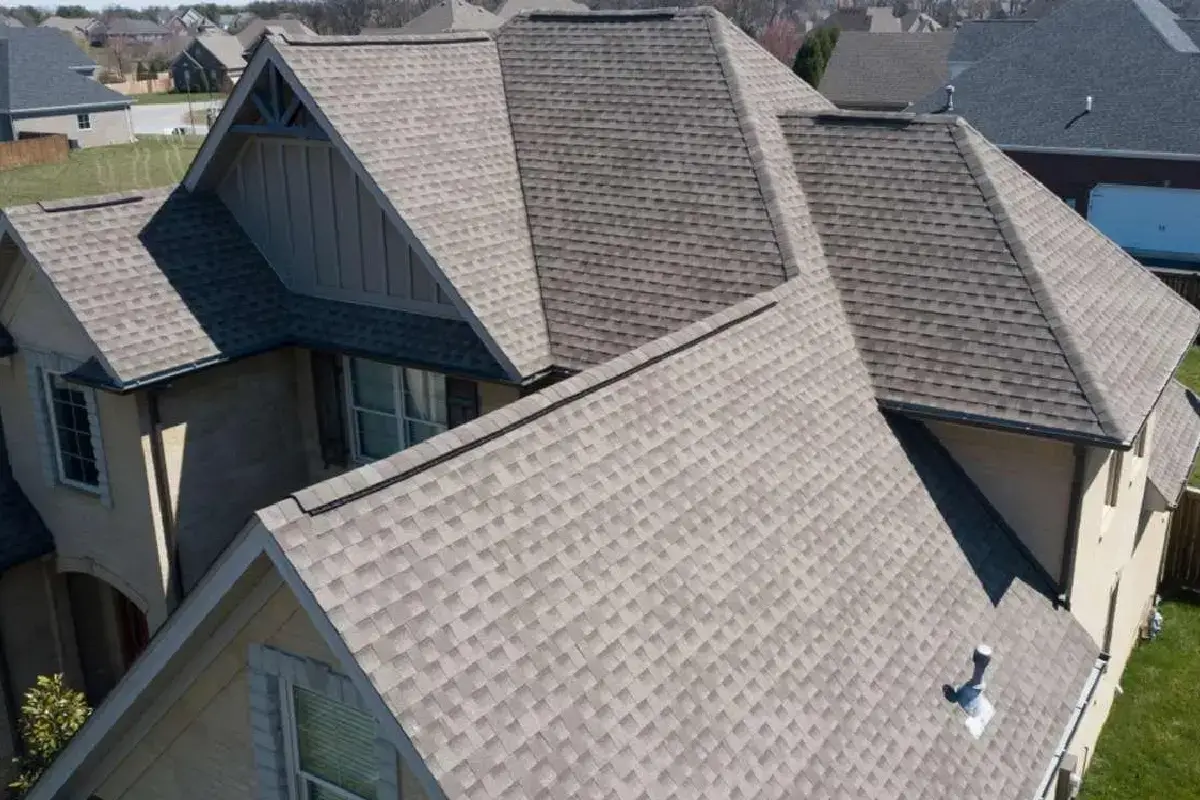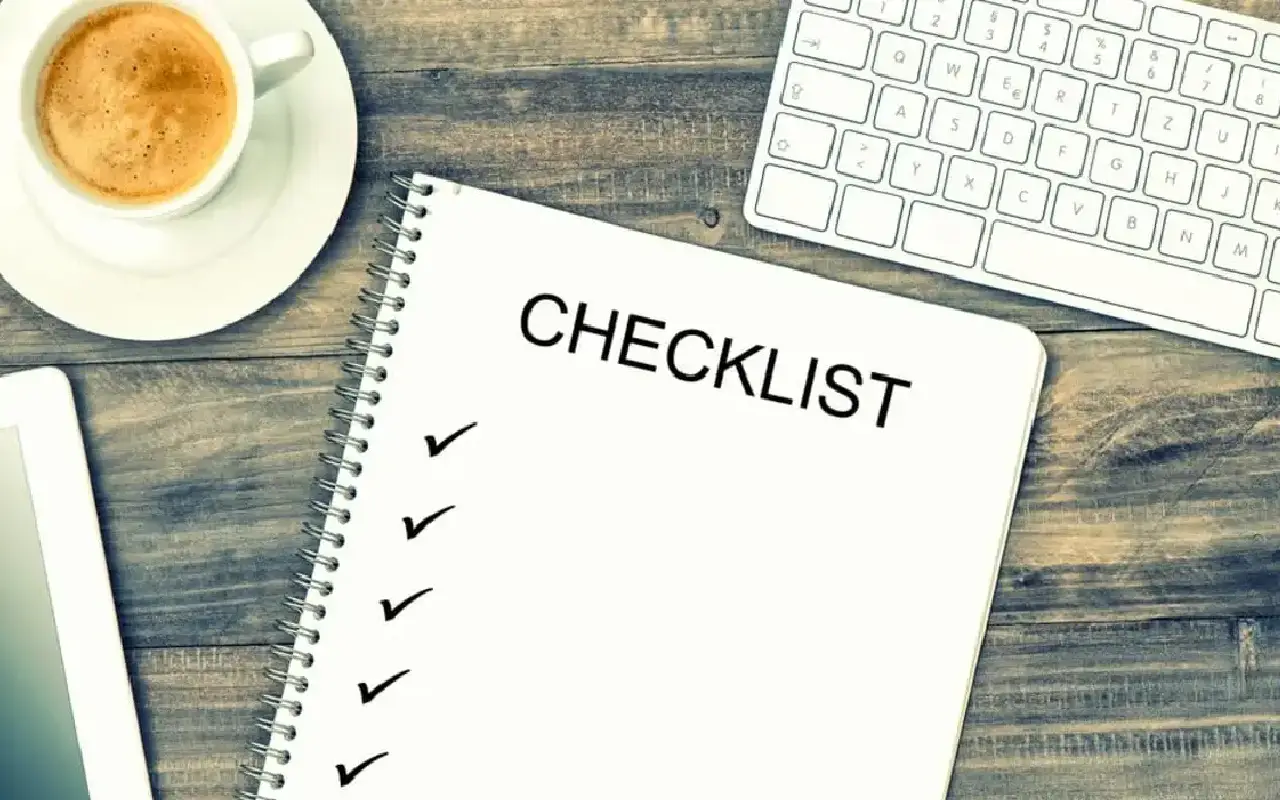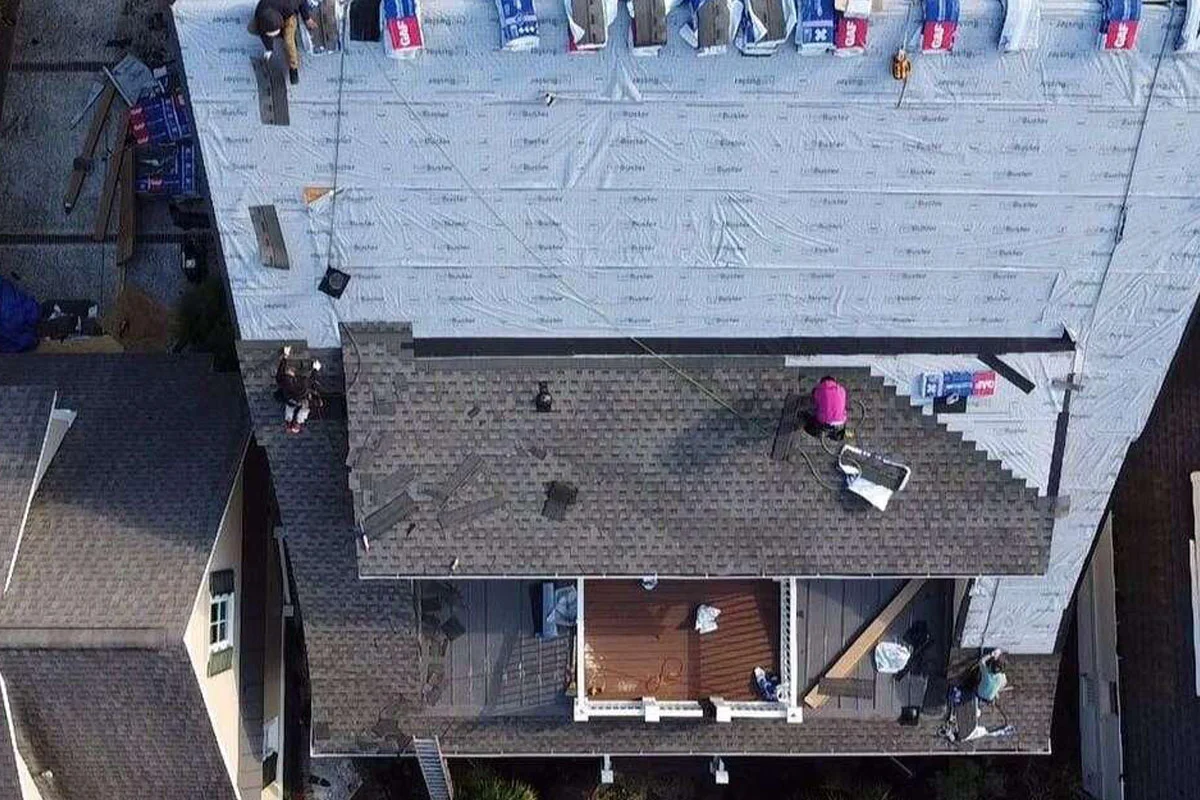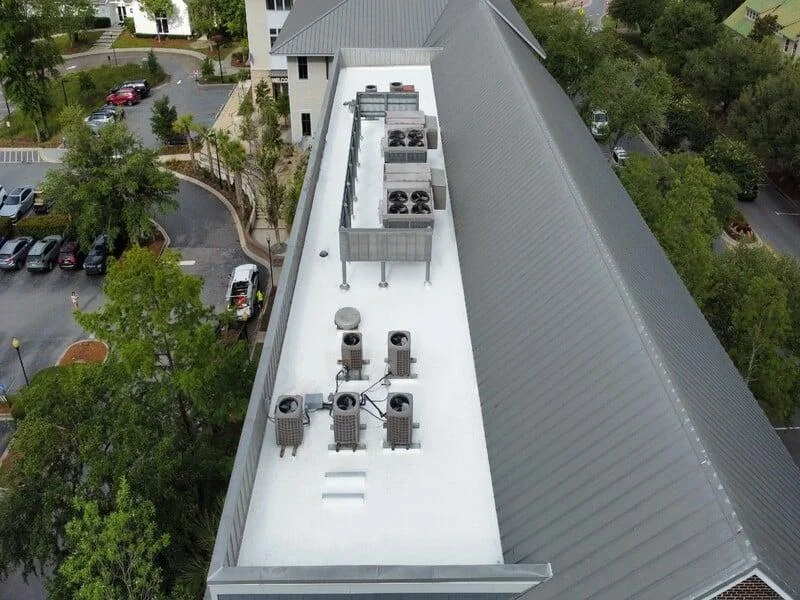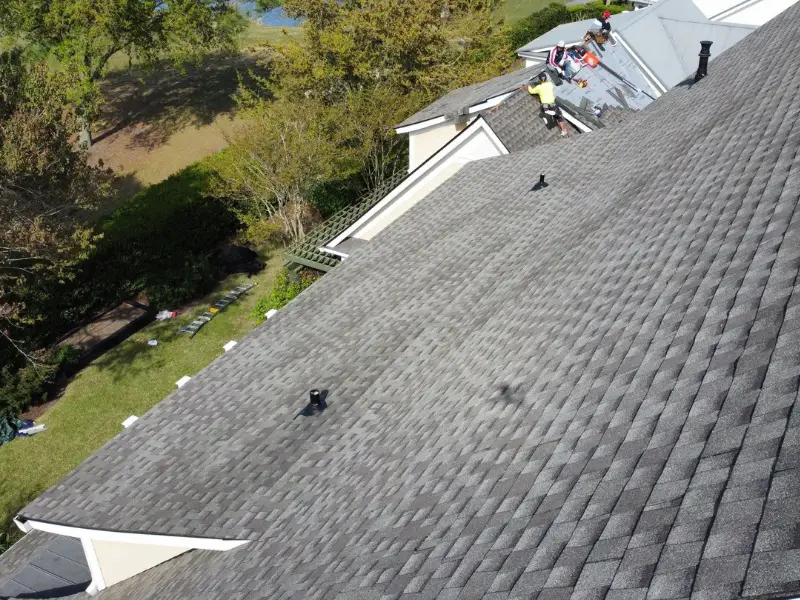A severe storm can cause significant damage to your roof, leading to costly repairs. While you may not be able to control the weather, there are measures you can take to ensure the safety of your home and family during such an event.
In this blog post, we will discuss what to do when your roof suffers storm damage. We will cover the types of damage that can occur, immediate steps to take, common mistakes homeowners make after the damage, the materials that can withstand storms, and preventive measures you can take to fortify your roof against future storms.
Whether you’re a homeowner in Columbia or elsewhere, these tips from our experts at Roofing USA will guide you through every step after experiencing roof damage from a severe storm.
Understanding Types of Storm Damage
Storm damage to roofs can vary greatly, appearing as minor issues like loose shingles to severe problems like structural destruction. The type of damage primarily depends on the storm’s intensity and the roof’s material and age.
Hail Damage on Roof
When a hail storm hits your roof, it can cause significant damage. The impact can result in dented or cracked shingles, which, if left unattended, may lead to leaks and water damage over time.
It’s important to address these issues promptly to prevent further complications and ensure the long-term integrity of your roof.
Wind Damage
Strong winds have the potential to wreak havoc on your roof. One of the ways they can cause damage is by lifting shingles and disrupting their alignment.
When this happens, it creates gaps between the shingles, which in turn can allow water to seep into your roof. This water infiltration can lead to extensive water damage and costly repairs if not addressed promptly.
Therefore, it is crucial to be aware of the potential impact of wind on the integrity of your roof and take preventive measures to ensure its longevity.
Water Damage
Water damage is a type of damage that can pose significant long-term issues to your home. When excess water infiltrates your living space, it can lead to the growth of harmful molds, compromising the air quality and potentially triggering health problems.
Furthermore, continuous exposure to water can gradually weaken the structural integrity of your home, potentially resulting in costly repairs or even safety hazards.
3 Immediate Steps to Take After a Storm
After a storm, it’s crucial to act quickly and carefully to mitigate any potential damage. Here are a couple of crucial steps that you need to take immediately following a storm to ensure the safety of your home and loved ones.
1.) Safety Precautions
When dealing with the aftermath of storm damage, prioritize safety above all else. Take every necessary precaution to ensure the well-being of yourself and your loved ones.1. Avoid going outside immediately after the storm: Hazards such as downed power lines, broken glass, and sharp debris can pose serious risks. Wait until the storm has passed before venturing outdoors.
2. Steer clear of the damaged area: If the storm has caused significant damage to your roof, it’s best to keep a safe distance to avoid any potential falling debris.
3. Turn off electricity: If there is a risk of water intrusion in your home, it’s advisable to turn off the electricity to prevent any electrical hazards.
4. Wear protective gear: If you need to examine the damage, wear sturdy shoes, long pants, and gloves to protect yourself.
5. Document the damage: Take pictures or videos of the damage for insurance purposes, but do so only from a safe distance.
By taking these extra steps to protect yourself and your family, you can minimize the risks associated with storm damage and ensure a safer recovery process.
2.) Document the Damage
Once you have ensured your safety, document the damage. This includes taking detailed photos and descriptions of all visible damage, capturing every aspect to provide a comprehensive record.
These photos will serve as essential evidence to support any potential insurance claims in the future, safeguarding your property and ensuring a smooth claims process.
3.) Contact a Professional Roofing Contractors
After ensuring your safety and documenting the roof damage, the next crucial step is to contact a roofing professional. It’s important to remember that repairing roof damage is not a DIY job. Roofing professionals, like Roofing USA, are equipped with the necessary skills, tools, and training to safely and effectively handle storm damage repair.
Find a reputable roofing contractor in your area to assess the damage, provide an estimate for the repair work, and guide you through the insurance claim process if needed. When selecting a professional, ensure they are licensed, insured, and have good customer reviews.
Additionally, it’s advisable to get multiple estimates to ensure you’re getting a fair price.
Once you have chosen a contractor, they will conduct a thorough inspection of the damage and suggest the best course of action. Depending on the extent of the damage, this could range from minor repairs to a roof replacement.

Common Mistakes Homeowners Make After Storm Damage
After a storm, many homeowners make the mistake of neglecting to thoroughly assess and document the damage, or rushing into DIY repairs without proper expertise. Both can lead to more severe damage in the long run and even endanger the occupants’ safety, proving the importance of professional help.
Delaying Repairs
One of the most common and costly mistakes that homeowners often make after experiencing storm damage is delaying necessary repairs.
Water damage can wreak havoc rapidly, seeping into every nook and cranny of your home. The longer you wait, the more extensive and costly the damage will become, affecting not only the structural integrity but also the overall safety and comfort of your living space.
Therefore, it is crucial to take immediate action and address the storm damage promptly to mitigate any further complications and ensure the long-term well-being of your property.
Choosing the Cheapest Repair Option
Steer clear of simply opting for the cheapest option without taking into account the quality of the work. Choosing a low-cost fix might seem like a budget-friendly choice at first, but it could result in a subpar solution that won’t withstand future storms.
Ultimately, this could lead to additional expenses in the long run.
By prioritizing the quality of the repair work, you can ensure a durable and reliable solution that will stand the test of time, providing you with peace of mind and saving you from potential headaches down the road.
Ignoring Adjacent Structures
Neglecting to address adjacent structures, such as gutters and chimneys, can result in additional damage.
This is why it is crucial to engage the services of a professional who can meticulously inspect these areas for any signs of harm following a storm.
Materials Matter: How Different Roofing Materials Withstand Storms
The choice of roofing material is of utmost importance when it comes to the resilience of your roof during a storm. The type, quality, and durability of the material can make a substantial difference in how well your roof can withstand the harsh elements.
From impact resistance to wind uplift resistance, selecting the right roofing material can provide the added protection and peace of mind you need during severe weather conditions.
Let’s explore the pros and cons of each roofing material.
Asphalt Shingles
Asphalt shingles are affordable and easy to install. They come in different colors and styles to suit any home design.
The downside is that they are susceptible to strong winds and hail, which can easily damage them. They also have a shorter lifespan compared to other roofing materials.
Metal Roofs
Metal roofs are highly durable and withstand severe weather conditions, including high winds and hail. They offer a long lifespan and require less maintenance than other roofing materials.
However, they are more expensive to install. They can also be noisy during rain and hail storms.
Tile Roofing
Tile roofs are not only aesthetically pleasing but also incredibly durable. They are highly resistant to damage from storms and have an extensive lifespan.
The downside is that they are one of the more expensive roofing options. They also require a strong support structure due to their weight.
Slate Roofing
Slate roofs are one of the most durable roofing options available. They can withstand extreme weather conditions, and their longevity is unparalleled.
Nevertheless, slate roofs are expensive and require professional installation due to their weight. They might not be suitable for houses in regions prone to earthquakes.
Fiberglass Shingles
Lastly, fiberglass shingles are lightweight, fire-resistant, and relatively durable, making them a popular choice for many homeowners.
It’s important to know they may not be as resistant to high winds and severe weather conditions as some other materials. Their lifespan is shorter than that of tile, metal, or slate roofs.
Preventive Measures: Fortifying Your Roof Against Future Storms
Fortifying your roof against future storms is crucial to avoid experiencing further damage in future weather events. Let’s explore some preventative measures you can take to protect your home against a storm.
Investing in Wind Resistant Shingles
Investing in wind-resistant shingles is an excellent option for areas that frequently experience high winds. These specially designed shingles are engineered to withstand the powerful gusts and turbulent weather conditions that often occur in such regions.
Properly Anchoring and Bracing Roof Components
Properly anchoring and bracing roof components, such as gutters and chimneys, can significantly reduce the risk of damage during severe weather conditions. By securely fastening these elements to the structure, you create a solid foundation that can withstand strong winds, heavy rain, and other potential hazards.
Regular Maintenance Tasks
Regular maintenance tasks for your roof ensure its longevity and prevent costly repairs. By performing routine inspections and addressing issues promptly, you can keep your roof in optimal condition.
Here are some maintenance tasks you can do:
- Clearing gutters of debris: Regularly remove leaves, twigs, and other debris from your gutters to ensure proper water flow and prevent water damage.
- Trimming trees around your home: Trim branches that are close to or touching your roof to prevent potential damage from falling branches during storms.
- Attending to any minor damage: Regularly inspect your roof for any signs of minor damage, such as loose shingles or cracks, and fix them promptly before they become a significant problem.
By performing these maintenance tasks, you can keep your roof storm-ready and prevent costly repairs in the future.

Get Your Roof Repaired With the Best Roofing Company Columbia, SC Offers
Maintaining the safety of your home and family during a severe storm is essential. Understanding the types of damage that can occur, knowing the immediate steps to take, and avoiding common homeowner mistakes can help prevent further damage.
Roofing USA is your trusted partner in safeguarding your home against storm damage. Our team of experienced professionals is equipped with the skills and knowledge to provide a comprehensive range of roofing services tailored to your needs.
We offer a thorough inspection of your property to assess the extent of the damage and provide an honest, detailed estimate for the necessary repairs or replacement. We also guide you through the insurance claims process, ensuring a smooth, hassle-free experience.
Trust Roofing USA to provide expert, reliable, and high-quality roofing services, giving you peace of mind knowing your home is in safe hands.
If you’re in the Columbia area and interested in learning more about our services, contact us now!




